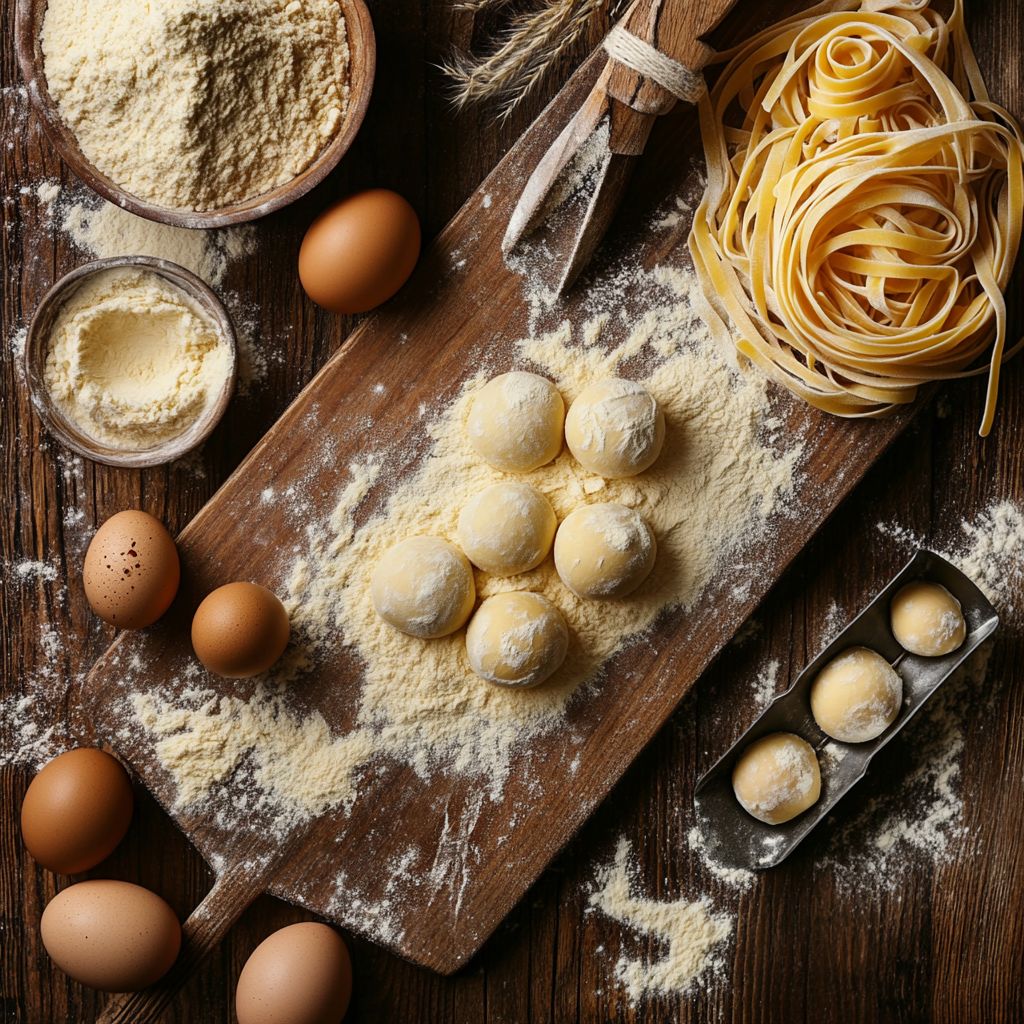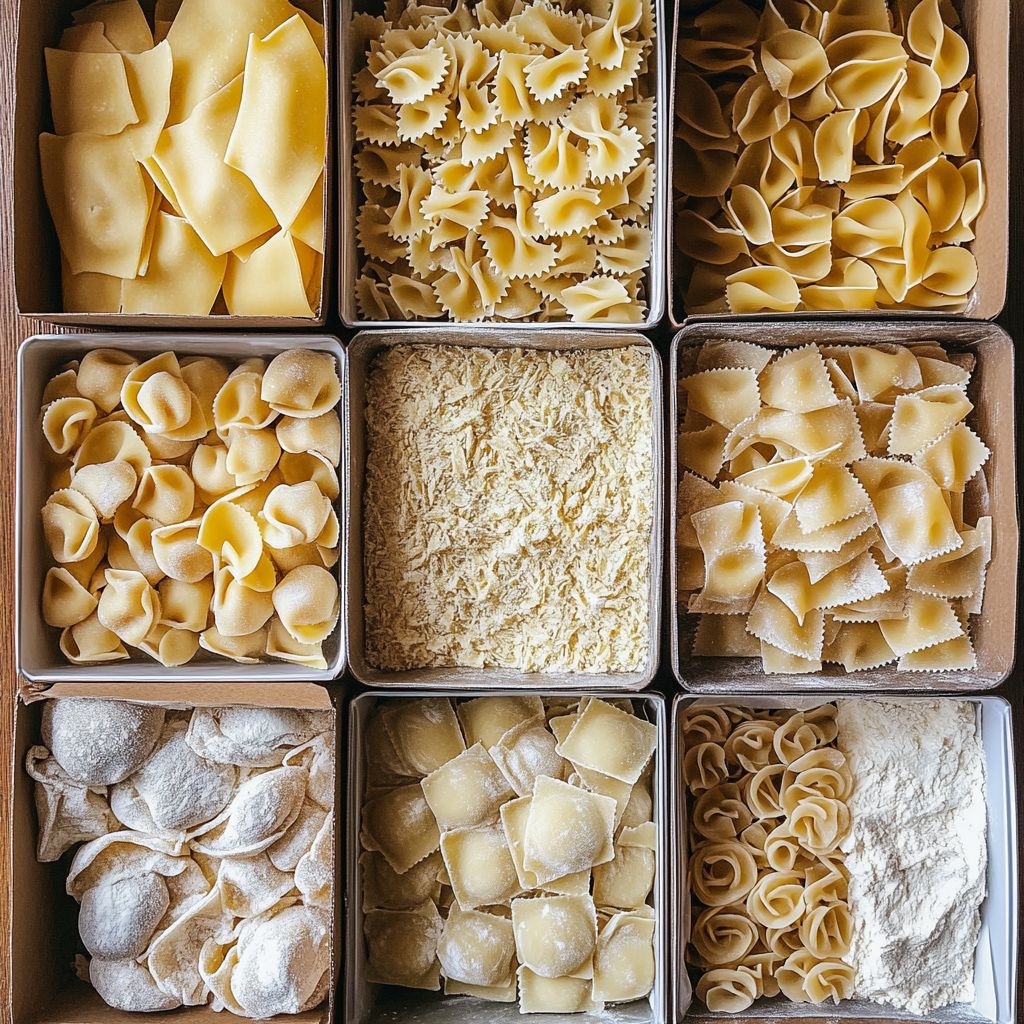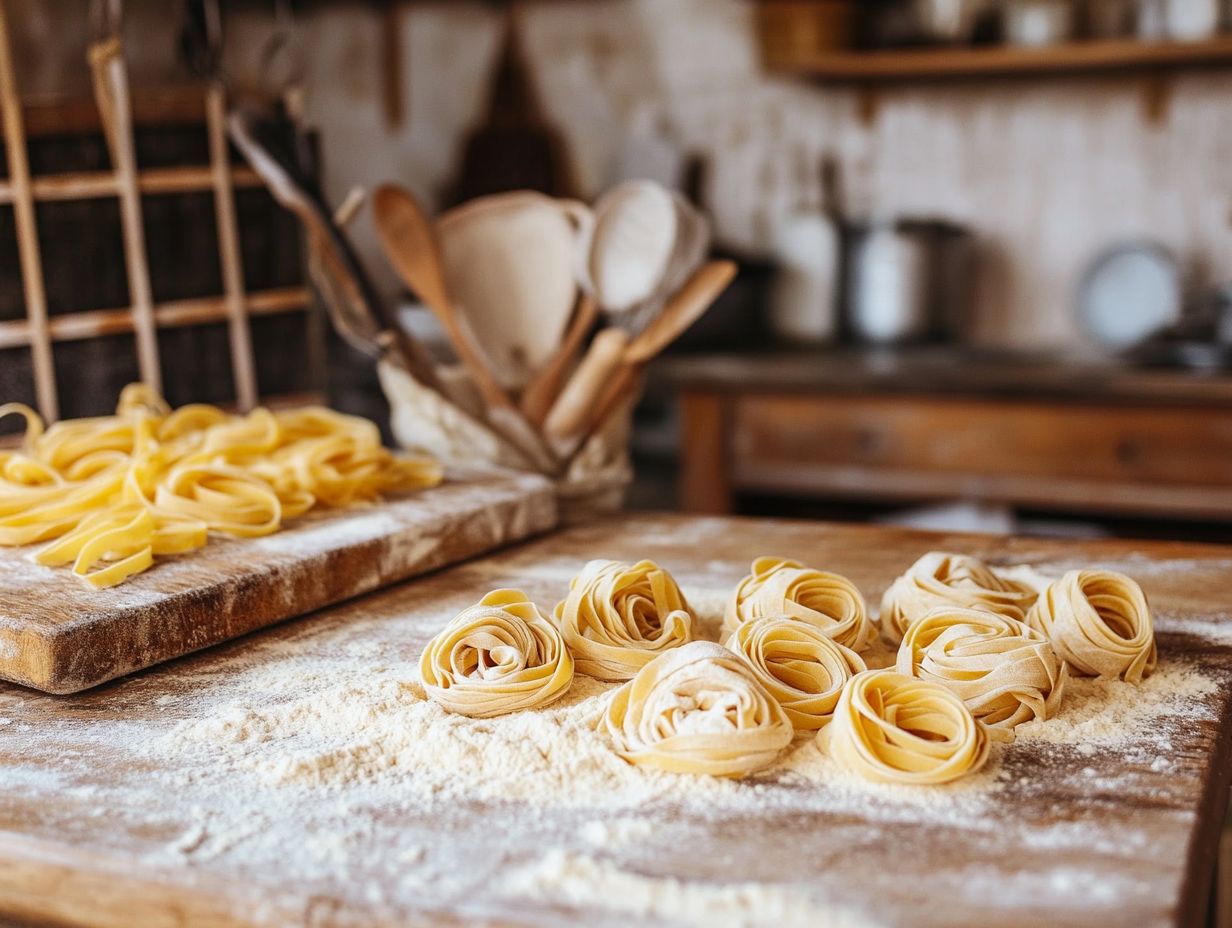Fresh pasta has a magic to it — silky, tender, and miles ahead of the boxed kind. But making it from scratch takes love and effort, so knowing how to store fresh homemade pasta properly ensures that all that work never goes to waste. In this guide, we’ll walk through different ways to keep your pasta fresh — whether you’re storing it short-term for tonight’s dinner or planning ahead for next week. Chef André will also share his personal tips, from flour-dusting secrets to freezer tricks. Let’s make sure every noodle gets the respect it deserves.
Why Fresh Pasta Deserves Proper Storage
From Grandmother’s Hands to Your Kitchen Counter
When Chef André was just a boy, the hum of the pasta roller in his grandmother’s kitchen was the sound of Sunday comfort. Every noodle was made by hand, laid gently on floured towels, and stored with love. But there was a secret behind her incredible pasta — it wasn’t just the fresh ingredients. It was how she stored fresh homemade pasta that made it unforgettable. She knew the dough’s delicate balance of moisture and texture had to be protected, whether it was used the same day or saved for later.
At AllFoody, we continue this delicious legacy. Learning how to store fresh homemade pasta can make all the difference between a clumpy disaster and a silky, flavorful meal. Whether you’re rolling out fettuccine, tagliatelle, or ravioli, proper storage ensures your efforts don’t go to waste.
For short-term storage, let your fresh pasta dry slightly at room temperature for about 15–30 minutes. Then place it in a lightly floured container or tray. This method is perfect when you plan to cook it within 24 hours. Avoid airtight containers right away unless the pasta is floured properly — otherwise, you risk unwanted moisture build-up.
Instead of refrigerating raw pasta immediately, let it rest first. You can learn more from our storing fresh made pasta guide or pair your stored dough with something tasty like this quick tomato-based pasta recipe.
How Long Can Fresh Pasta Stay Good?
If you’re wondering how to store fresh homemade pasta overnight, keep it dusted with flour and covered loosely with plastic wrap at room temperature for no more than 18 hours. For longer storage, freezing or drying are your best bets — both of which we’ll cover in detail next.
Freezing Fresh Pasta the Smart Way
Freeze It Fresh, Not Cooked
If you’re wondering how to store fresh homemade pasta for longer periods, freezing is your best bet. It preserves both texture and taste — without sacrificing freshness. The key is to freeze pasta before cooking it. Once your pasta is shaped (like tagliatelle or ravioli), dust it lightly with semolina flour and lay it flat on a parchment-lined tray. This prevents sticking and keeps the strands or pieces separate.
Then flash-freeze the tray for 15–30 minutes. Once firm, transfer the pasta into airtight freezer-safe containers or bags. Label with the date and type of pasta. Using this method, you’ll know how to store fresh homemade pasta in the freezer for up to 2 months without losing its delicate flavor or structure.
Want an easy way to enjoy your frozen stash? Use it in something quick like our marry me chicken pasta — a creamy, one-pan favorite that cooks perfectly with frozen noodles. Or try it in this protein pasta recipe that’s ideal for meal prepping.

Reheat the Right Way
Knowing how to store fresh homemade pasta also means understanding how to reheat it properly. Don’t thaw frozen pasta. Boil it straight from the freezer in salted water. Depending on shape and thickness, it only needs 1–3 extra minutes. If it’s a filled pasta like ravioli, cook in small batches and use a slotted spoon to prevent tearing.
Try pairing your reheated pasta with fresh ideas from our protein pasta salad or explore side options from what to make with eggs for a balanced plate.
Now that you know how to store fresh homemade pasta in the freezer and bring it back to life, you’re one step closer to stress-free dinners every week.
Drying Homemade Pasta for Long-Term Storage
Why Drying Is the Traditional Way
Before freezers and plastic containers, drying was the original way to store pasta. If you want to know how to store fresh homemade pasta the traditional Italian way, drying is the answer. It extends the shelf life to up to six months, making it ideal for stocking your pantry. Plus, it’s perfect if you’re making big batches of spaghetti, linguine, or even lasagna sheets.
To start, hang the pasta on a drying rack or place it in single layers on a floured surface. Choose a well-ventilated, dry area of your kitchen. Allow the pasta to dry for 24–48 hours depending on thickness and humidity. Once it’s brittle and snaps when bent, it’s fully dried and ready to be stored in airtight glass jars or zip-top bags. That’s how to store fresh homemade pasta if you want it shelf-stable and easy to grab anytime.
Need inspiration while it dries? Check out our comforting yellow potato dinner sides or hearty egg-based recipes for dinner to round out your pasta night.
The Best Pasta Shapes for Drying
Not all shapes dry the same. Long, thin strands like spaghetti or tagliatelle dry evenly and store beautifully. Short shapes like penne or orecchiette also work well, but require more airflow. Stuffed pasta like ravioli isn’t ideal for drying, as the filling can spoil. For those, use the freezing method we covered earlier.
Once dried, always store the pasta in a cool, dark cupboard to protect flavor. Knowing how to store fresh homemade pasta through drying gives you a rustic, old-school option that’s as practical as it is nostalgic.
If you plan to make sauces in advance too, consider pairing your dried noodles with something like a protein-packed dinner or one of our creamy egg-rich dishes from what to make with eggs.

Ingredients
- Semolina flour
- Fresh homemade pasta
- Airtight containers
- Drying rack
- Olive oil for cooked pasta
Instructions
- 1. Dust fresh pasta with semolina.
- 2. Let rest 15–30 mins on a floured tray.
- 3. To freeze, flash-freeze for 30 minutes and seal in airtight bags.
- 4. To dry, hang on racks for 24–48 hours.
- 5. Store dried pasta in a cool dark place.
- 6. Store cooked pasta in fridge with olive oil.
- 7. Reheat pasta in boiling water or on stove with broth.
Notes
Nutrition
Storing Cooked Pasta Without Ruining the Texture
How to Store Cooked Homemade Pasta in the Fridge
Even though this guide is focused on how to store fresh homemade pasta, there are times when you’ll cook too much — and leftovers need saving. The key to storing cooked pasta is all about moisture and preventing stickiness. First, drain your pasta well. Then, toss it with a light drizzle of olive oil to stop it from clumping.
Transfer the cooled pasta into an airtight container and refrigerate it for up to 4 days. If the pasta already has sauce on it, store it in a separate container, especially if it’s dairy- or cream-based. This simple habit helps preserve flavor and prevents the pasta from becoming soggy or gummy. It may not be the same as knowing how to store fresh homemade pasta, but it’s just as important for real-life meal planning.
For meal ideas using leftovers, try our egg-based dinner ideas or pair the stored pasta with comforting sides like yukon gold potatoes for a hearty weekday plate.
Best Practices for Reheating Cooked Pasta
Reheating cooked pasta without ruining its texture requires some finesse. For plain pasta, toss it in a pan with a splash of water or broth and heat gently. If it’s already sauced, reheat over low heat while stirring frequently. You can also microwave it, but always cover and add a little moisture to avoid dry patches.
Understanding how to store fresh homemade pasta is one thing — but knowing how to handle cooked leftovers completes the picture. With the right methods, your pasta will stay delicious, whether it’s Day 1 or Day 4.
For an extra tip: consider storing the pasta and sauce separately in the fridge. This helps you mix and match flavors later, and avoids overcooking during reheating.

Frequently Asked Questions
1. How long does fresh homemade pasta last in the fridge?
Fresh homemade pasta can last up to 2 days in the refrigerator, but it must be stored correctly. Lightly flour the pasta, place it in an airtight container, and keep it chilled. However, knowing how to store fresh homemade pasta by drying or freezing is often better for longer shelf life.
2. Can you freeze fresh homemade pasta?
Yes, freezing is one of the best ways to store fresh pasta. Dust it with semolina, freeze it on a tray for 30 minutes, then transfer to airtight bags. This method helps you understand exactly how to store fresh homemade pasta for up to 2 months without losing quality.
3. Should you dry pasta before storing it?
If you’re not cooking pasta the same day, drying is highly recommended. Hang or spread the pasta in a dry, ventilated space for 24–48 hours until brittle. This technique is a time-tested method for anyone learning how to store fresh homemade pasta for pantry storage
4. What is the best container to store fresh pasta?
4. What is the best container to store fresh pasta?
Use a shallow, airtight container dusted with semolina or flour. For short-term storage, a floured tray with loose plastic wrap works too. Choosing the right container plays a key role in understanding how to store fresh homemade pasta effectively.
Conclusion
Fresh pasta is a labor of love — and storing it right makes sure none of that love goes to waste. Whether you’re refrigerating, freezing, drying, or saving leftovers, knowing how to store fresh homemade pasta helps preserve texture, flavor, and all the care you put into it. Chef André’s kitchen may be powered by AI, but the heart behind every recipe comes from tradition — from learning grandma’s drying tricks to modern freezing hacks that work for busy home cooks.
So whether you’re cooking tonight or next week, you’re ready to keep your fresh pasta as perfect as the moment you made it. Stay tuned for more timeless techniques and inspired dishes, right here at AllFoody.

